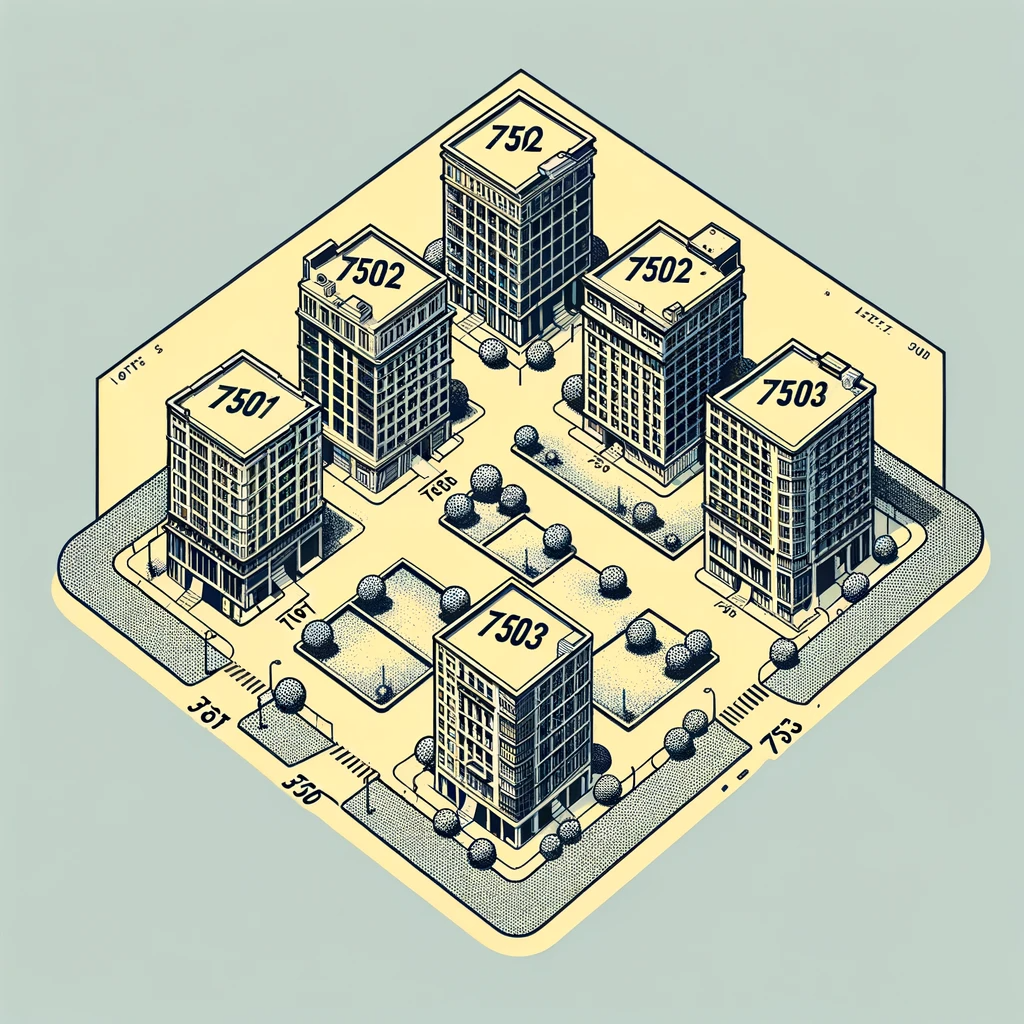LOT 7501, 7502, 7503: More Than Just Numbers
In the bustling real estate landscape of New York City, each property lot, such as 7501, 7502, and 7503, holds a unique story, especially in the context of condominiums and cooperatives. These lots, distinguished by their individual characteristics and regulatory constraints, play a critical role in shaping the residential property sector.
Understanding the LOTs
- LOT 7501: Imagine a towering condo with distinctive architectural elements, offering residents private ownership of their apartments along with shared common spaces. This lot, subject to specific zoning and environmental regulations, may offer a blend of luxury and convenience, attracting a diverse range of inhabitants from young professionals to families.
- LOT 7502: This could be the site of a classic cooperative building, where the concept of shared ownership prevails. Residents here don’t just buy an apartment; they buy into a company owning the building, a concept that significantly alters the dynamics of property ownership, from financing and tax implications to the decision-making process in building management.
- LOT 7503: Envision a mixed-use development, seamlessly integrating residential living with commercial enterprises. This lot might host a combination of retail spaces, offices, and residential units, each segment bringing its unique set of management challenges and regulatory requirements.
- LOT 7504: May accommodate a specialized residential complex with unique environmental or community features, subject to specific zoning laws.
- LOT 7505: Ideal for a boutique residential development, potentially offering luxury amenities and exclusive living spaces.
- LOT 7506: Can be developed into a community-focused residential area with emphasis on shared spaces and communal living.
- LOT 7507: Suitable for a medium-density residential development, possibly with a blend of apartment styles and communal facilities.
- LOT 7508: May support a low-rise, community-centric residential complex with a focus on sustainability and green living.
- LOT 7509: Ideal for a mixed residential-commercial development, offering a balance of living spaces and business opportunities.
- LOT 7510: Could be a site for a large-scale residential project, potentially with multiple buildings and extensive communal areas.
- LOT 7511: This lot could be ideal for a residential development with a focus on family-friendly amenities and spaces, possibly including playgrounds and community gardens, designed to foster a strong sense of community among residents.
- LOT 7512: Suitable for a compact residential development, possibly with innovative architectural designs and efficient use of space.
- LOT 7513: May accommodate a diverse residential community with varied housing types and inclusive amenities.
- LOT 7514: Ideal for a high-density residential project, with potential for tall buildings and a bustling community atmosphere.
- LOT 7515: Could host a luxury residential development, with emphasis on high-end amenities and exclusive living experiences.
The Impact of Lot Differentiation
- Zoning and Environmental Regulations: The zoning laws governing these lots dictate what can be built and how it can be used. Environmental requirements, especially in a city as densely populated as NYC, can influence everything from building materials to waste management practices, profoundly impacting the sustainability and livability of these structures.
- Market Value and Investment Opportunities: The unique attributes of each lot significantly influence their market value and attractiveness to investors. Factors like location, accessibility, and the potential for future development play a crucial role in determining the desirability of these properties.
- Property Management Challenges: Managing a property in NYC is no small feat, especially when dealing with diverse lot specifications. Property managers must navigate a labyrinth of regulations, ensuring compliance while also addressing the unique needs of residents or commercial tenants.
Diving Deeper: LOTs 7501, 7502, 7503
Zoning Complexities: Zoning laws in NYC are a tapestry of regulations that shape the city’s skyline. The zoning specifics for lots like 7501, 7502, and 7503 directly influence the architectural design, the density of development, and the permissible uses of these properties, thereby dictating the lifestyle and opportunities available to the residents.
Environmental Considerations: Environmental designations, or (E) designations, highlight lots with environmental issues such as potential exposure to hazardous materials or high noise levels. Addressing these concerns is not just a legal obligation but also a moral one, ensuring the health and safety of the residents and the surrounding community.
Financial Dynamics: The financial landscape of these lots is complex. For investors and residents alike, understanding the economic implications of zoning and environmental constraints is crucial. This knowledge can influence everything from property prices to the cost of living and the potential return on investment.
Community and Lifestyle Impacts: The design and functionality of these lots significantly impact the lifestyle of their residents. A lot with a focus on sustainability might attract environmentally conscious individuals, while a mixed-use lot may appeal to those seeking a vibrant, urban lifestyle.
Legal and Regulatory Navigation: Navigating the legal and regulatory landscape of NYC real estate requires expertise and diligence. For stakeholders in lots 7501, 7502, and 7503, understanding the legalities of zoning, environmental regulations, and property rights is crucial for ensuring compliance and protecting their investments.
The narrative of lots 7501, 7502, and 7503 in NYC’s real estate market is a rich tapestry of zoning challenges, environmental considerations, financial implications, community dynamics, and regulatory intricacies. For participants in the condo and co-op markets, a deep understanding of these aspects is not just beneficial but essential. It informs decision-making, ensures compliance, and ultimately enhances the quality of life for those who call these lots home. Understanding these lots is key to unlocking the full potential of NYC’s diverse and dynamic real estate landscape.

